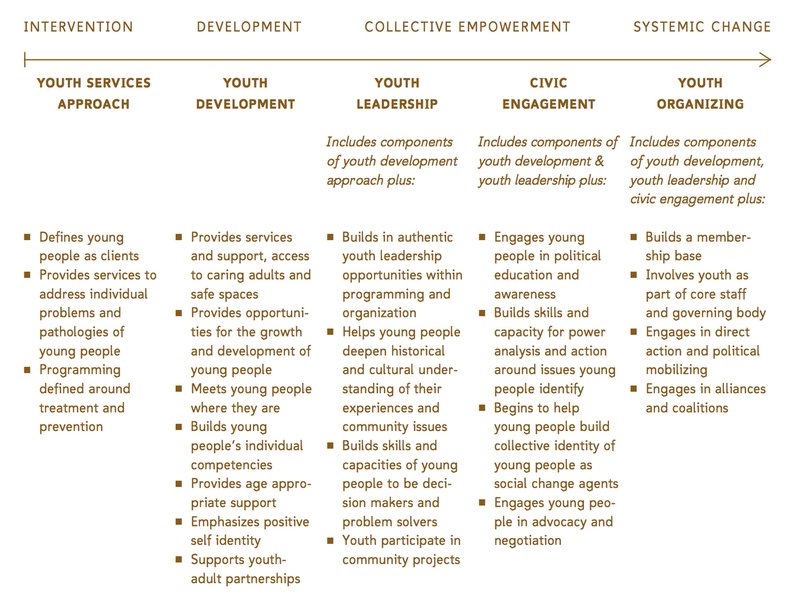Report: Improving Communities through Youth Civic Engagement in Afterschool
Read moreExecutive Summary: Improving Communities through Youth Civic Engagement in Afterschool
Read moreWebinar: Building Better Communities - Youth Civic Engagement in Afterschool Programs
Watch the webinarThe majority of young people believe they have the power to make change, and even more believe they can do so by working with other generations. However, most young people do not feel well-informed or well-qualified to participate civically or politically, due to a perception that their voices don’t matter, a lack of comprehensive civic education, or a general distrust in political institutions to address the issues they care about.
Youth-serving organizations can address these barriers by elevating youth voices and empowering young people to be civically engaged, to improve their communities, and tackle issues that matter most to them.
Who is this resource for?
This resource is for programs, organizations, and individual practitioners interested in engaging the youth they serve in civic engagement opportunities. This dynamic toolkit is designed to provide tools, curricular resources, and examples from partners to inspire you on the journey of elevating youth voice and empowering youth through civic engagement. The resources in this collection are particularly focused on supporting afterschool and other out-of-school time programs, but may be useful to a wide range of youth-serving programs.
What is Youth Civic Engagement?
All ways that individuals and communities come together to solve problems of public concern can be considered civic engagement. Youth come from varied backgrounds, participate in different settings, and confront unique challenges, so civic engagement takes on different meanings for different groups and individuals.
Key Terms
Individuals and communities coming together to solve problems of public concern at the local, state, and national levels. This includes political activities (e.g. voting, campaigning, signing petitions, etc.) and non-political activities (e.g. volunteering, donating money, neighborhood cleaning, etc.).
The set of skills, knowledge, and competencies that individuals need in order to engage effectively in civic life. Civic literacy may include understanding the voting process and political institutions, the ability to advocate and organize, and the capacity to deliberate about public issues.
The distinct ideas, opinions, attitudes, knowledge, and actions of young people as a collective body, emphasizing their inclusion in decision-making processes and empowerment as active participants and co-leaders. This includes fostering intergenerational partnerships where young people and adults collaborate, share power, and work together to achieve common goals, valuing the unique contributions and perspectives each generation brings.
The Spectrum of Youth Civic Engagement
The Funders' Collaborative on Youth Organizing's Youth Engagement Continuum describes how and to what extent a program's youth engagement is tending toward authentic youth empowerment in educational, civic, and political decision-making. The Youth Engagement Continuum features four developmental levels or progressive degrees of youth engagement—Intervention, Development, Collective Empowerment, and Systemic Change—and five forms of youth participation aligned with the developmental progression: Youth Services (Intervention), Youth Development (Development), Youth Leadership and Youth Civic Engagement (Collective Empowerment), and Youth Organizing (Systemic Change).
Learn more: The Funders’ Collaborative on Youth Organizing: Youth Engagement Continuum
Explore other models illustrating the spectrum of youth civic engagement:
● The Philanthropy for Active Civic Engagement (PACE)’s civic engagement spectrum illustrates how individuals can participate in strengthening their communities, engaging in political participation, and advocating for causes they care about. The spectrum describes action ranging from local to national impact and examines outcomes from the individual level to systems-level.
● Illinois State University’s Center for Civic Engagement provides the Civic Engagement Continuum, which includes nine different classifications to help better understand the various ways faculty, staff, and students are engaging with civic issues and community organizations.
Why prioritize youth civic engagement?
Young people have a critical stake in the decisions that impact their lives and the nation's future. From education and healthcare to the environment and foreign policy, the issues facing us today resonate deeply with young people. Their participation in the democratic process through civic engagement, even before they are of voting age, is vital.
Their understanding of local issues in their communities, coupled with their ability to generate novel solutions and their interest in social progress, positions them as powerful forces for change.
What does authentic youth civic engagement look like?

Lucia, Age 17, Tackling Social Isolation and Mental Health Issues in New York
How I’m leading change: “As Co-Founder and Chief Program Officer of BridGEN, I lead a youth-driven initiative tackling two interwoven issues in my community: social isolation among elders and mental health challenges in digitally saturated youth. Through weekly intergenerational workshops blending digital literacy, art, music, and storytelling at local senior centers, we create screen-free spaces where empathy thrives. Elders rediscover joy and purpose through mentorship, while teens gain resilience from lived wisdom. In a fragmented world, BridGEN is built on a simple truth: connection is the cure to loneliness. I’ve seen shy teens sing with elders whose eyes light up and watched tech tutorials transform into trust. These small, sacred moments taught me that empathy is scalable - we build more than relationships, but a compassionate, inclusive, and sustainable future.”
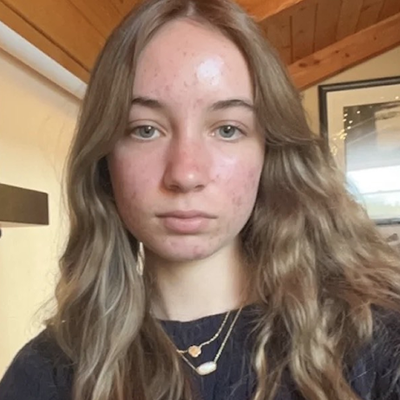
HattieRose, Age 15, Making an Impact in New Mexico
How I’m leading change: “I recently had the opportunity to make a meaningful impact in my community in Northern New Mexico by working with both youth and adults to address a challenge. I’ve been helping to design and build curricula for classes that aim to teach and inspire girls my age to explore AI. This initiative addresses an issue by creating opportunities for girls who, like me, may not have had many accessible paths in tech. By learning AI, they can gain valuable skills that open doors to future educational and career opportunities.”
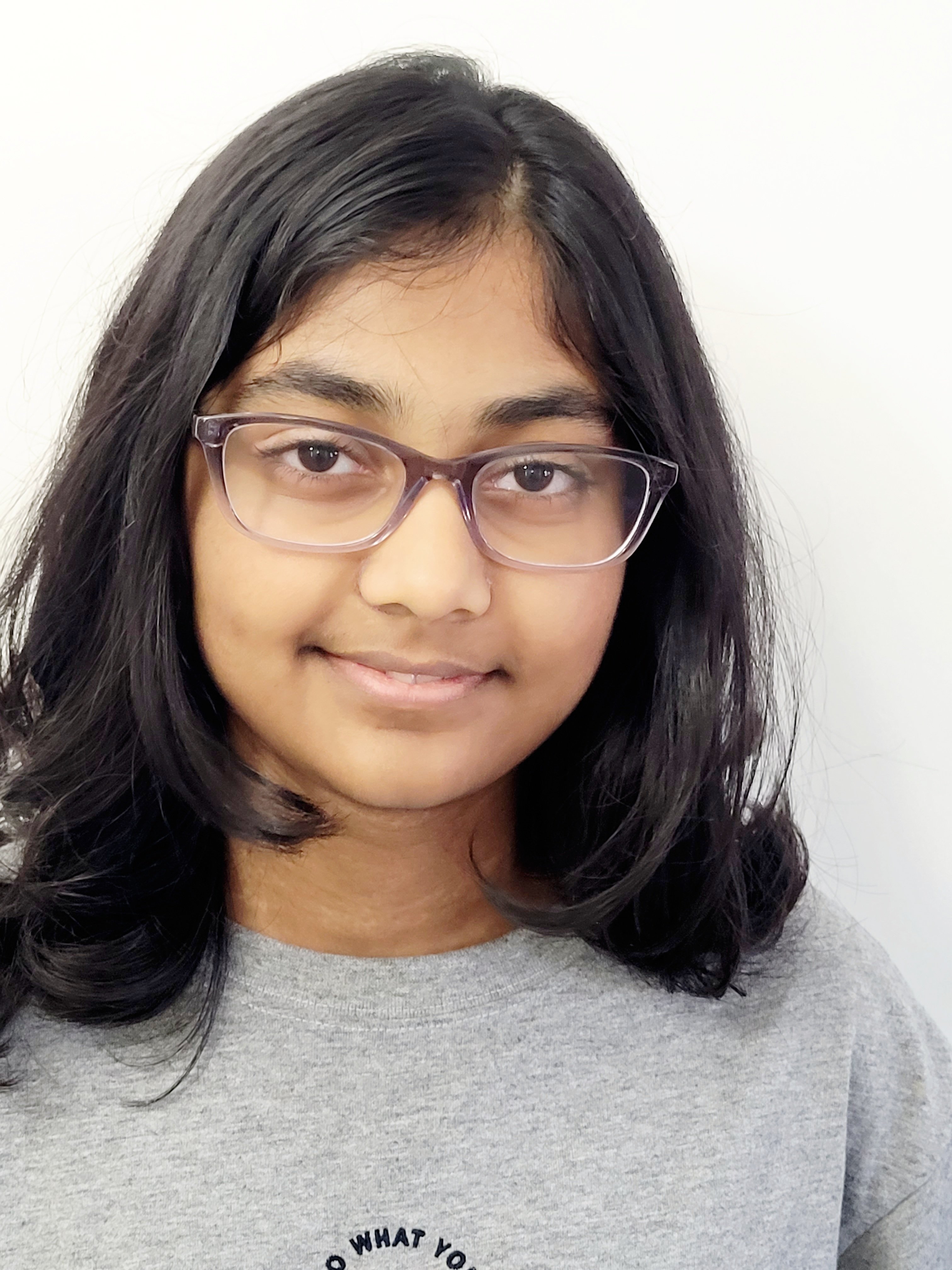
Reeti, Age 17, Reaching Underserved Communities in New Jersey
How I’m leading change: “I’ve worked with both youth and adults in my community to address the STEM education gap. I co-founded a nonprofit called WeMake to offer free coding and robotics workshops in underserved areas. I’ve also launched a STEM 4-Her initiative to support girls in tech through hands-on programs. My role involves organizing events, leading workshops, and collaborating with local organizations to expand our reach and impact.”
Youth tips for how afterschool programs can support youth civic engagement:
- Provide youth with leadership opportunities, mentorship, and resources to turn their ideas into action
- Create inclusive spaces where youth feel heard, valued, and encouraged to collaborate on real-world issues they care about
- Create a safe and welcoming space to build trust and create opportunities for meaningful engagement
- Provide opportunities for youth to connect liked-minded peers, so they can collaborate and make a bigger impact

trubel&co
trubel&co empowers youth by integrating STEM education with civic innovation to tackle societal challenges. Through their flagship program, Mapping Justice, trubel&co empowers students to use geospatial technology for social change, fostering data literacy, critical thinking, and community advocacy. Their approach transforms STEM pathways into platforms for liberation and equity, ensuring every young innovator can contribute to a just and inclusive future.
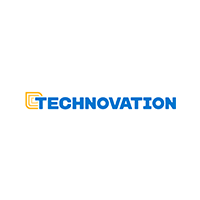
Technovation
Technovation is a global tech education nonprofit that empowers girls (ages 8-18) to become tech leaders, creators, and problem-solvers. Participants find a real-world problem in their community and develop an app solution to it, which helps bring technology to life in a civic-focused, tangible way.
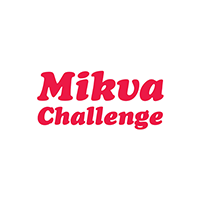
Mikva Challenge
Mikva Challenge was founded on the premise that youth voice and participation matter, and that our civic and political life will be stronger when youth participate and help shape their own destinies. The Mikva Challenge envisions a stronger, inclusive democracy that values youth voice.

4-H Civic Engagement Programs
4‑H civic engagement programs empower young people to be well-informed citizens who are actively engaged in their communities and the world. Youth learn about civic affairs, build decision-making skills, and develop a sense of understanding and confidence in relating and connecting to other people.

Boys and Girls Club, Youth for Change
The Youth for Change “Think, Learn, Create Change (TLC)” platform is designed to empower Boys & Girls Club members to act on critical issues and become change agents through the creation and implementation of their own TLC-backed local advocacy project. Through their projects, teens create solutions to issues they see in their community and develop valuable life skills.
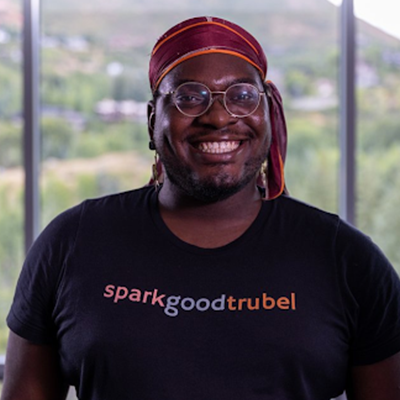
Nick Okafor, Founder of trubel&co, on connecting the dots between STEM and civic engagement:
Growing up, trubel&co founder Nick Okafor always had a passion for science and technology, but he also felt a strong drive to use those skills to make a real difference in the world. His personal experiences pursuing technology inspired trubel&co, which is dedicated to empowering the next generation of responsible innovators to cause “good trouble” to solve society’s most complex issues. By combining technology with social impact, Okafor’s trubel&co also aims to broaden the pool of young people who are interested in STEM, noting that communities of color and women are more drawn to fields that have social impact.
“They [young people] inherently want to do good for their people, for the world, and the more that we can connect those dots and show that STEM is more than workforce, that STEM can represent all the things that they care about, the more progress we are going to get.” - Nick Okafor, Founder of trubel&co
How do I foster meaningful youth civic engagement?
Selected resources for supporting civic engagement and civic literacy
You can find additional resources on our CYESS resource database.
SRVCE Curriculum and Educator Toolkit- Supporting Readiness through Vital Civic Empowerment (SRVCE) blends inquiry-based civic learning, media literacy education, and exploration of careers in public service to prepare students to be active citizens and to thrive in the workforce.
4-H Citizenship: Government Is Us! A Civic Engagement Curriculum for Youth Groups - This curriculum is designed to help 4-H'ers and other young people aged 13 to 19 explore citizenship and civic education. Teens develop the attitudes, knowledge and skills they need to be active citizens and practice what they learn in their own communities.
iCivics: From educational games and short-form, just-in-time materials to comprehensive inquiry-based curricula, iCivics resources encourage students to interact with complex concepts in ways they can understand and relate to.
Technovation: Girls will learn how to use technology like mobile apps and AI to solve a community problem that matters to them. They will join a team of like-minded girls and receive support and motivation from an assigned mentor.
Guide to Changemaking: Peace First’s Changemaking Guides walk you through every stage of the changemaking journey. Guide 1 is your starting point and helps you explore your "Why;" Guide 2 helps you turn your idea into a clear plan with tools and a strategy; Guide 3 shows you how to tell your story; Guide 4 provides tips on sustaining yourself and your work; and Guide 5 helps you think about how to grow your movement.
Collaborative Discussion Toolkit: A resource designed by dialogue and deliberation experts, practitioners, and educators. It includes 50+ learning activities, each designed to intentionally develop collaborative discussion skills in areas of creativity, criticality, cultural responsiveness, and civic engagement.
Earth Force: Environmental Action Civics: Environmental Action Civics is an educational approach where youth work in partnership with adults to identify a local environmental issue and advocate for systemic changes to policies or practices.
Youth Stand Up: PBS LearningMedia is currently piloting a new multimedia digital civic action curriculum designed to inspire, equip, and empower middle school students to become changemakers. Youth Stand Up (YSU) offers video profiles of young civic leaders, civic action exemplars, explainer videos, and a skill-building toolkit to support youth through a changemaking project.
Facing History and Ourselves Mini Lessons: These lessons are written using Facing History’s unique pedagogical approach, with activities that balance personal reflection and collaboration and draw upon primary source material selected to activate students’ intellectual, emotional, and ethical engagement.
Empowering Youth Through STEM and Civic Engagement: Tools for Educators in Out-of-School Time Programs: This webinar recording features insights from experts at the Collective for Youth Empowerment in STEM & Society (CYESS), Earth Force, and Teen Science Café Network, offering practical tools and fresh ideas to engage older youth in innovative ways.
Made By Us: Civics and Gen Z Webinar: This webinar recording explores what you get when you combine science, civics, and the powerful partnership of Gen Z. Made By Us, a nationwide network of museums and cultural institutions working together to engage young adults ages 18-30, works to create relevant, engaging, and action-oriented content and programs.
Do-It-Yourself Guide to STEM Community Engagement: This Do-It-Yourself Guide to STEM Community Engagement provides schools, districts, and local community organizations with self-guided tools to engage a broad community of stakeholders in sustainable education innovation. This guide and its tools are informed by numerous researched sources and successful implementations in North Carolina communities - some of which are highlighted in this resource.
Pace’s Civic Engagement Primer: This Primer is designed to guide funders through understanding and integrating civic engagement into their work. It caters to funders who are considering civic engagement, those familiar but not yet invested, and those already investing but seeking unified tools and language. Users typically spend around 20 minutes with the Primer, gaining foundational knowledge of civic engagement philanthropy and determining its relevance to their goals. Additional resources are available to facilitate deeper exploration and discussions on key civic engagement concepts.
Youth Councils: Harnessing the Power of Engaged Youth: In this webinar from the National Civic League, speakers discuss the common characteristics of effective youth councils and share examples of cities who have successfully incorporated youth councils an authentic part of the decision-making process.
360 Civic Learning: A Toolkit for Supporting Youth Civic Engagement in Underserved Communities: Made in collaboration with young people, this toolkit from Generation Citizen provides guidelines and ideas to help foster a more holistic approach to empowering young people as civic actors.
The Association of Science & Technology Centers (ASTC) Civic Engagement and Policymaking Toolkit: This toolkit serves as a guide for science centers and museums and other science engagement organizations to thoughtfully identify and implement ways to nurture civic experiences across their work or deepen ongoing civic initiatives for meaningful change within their communities.
Community Action Projects for the Environment (CAPE) Resources- CAPE helps youth learn more about local environmental issues, select one to explore, and effectively voice suggestions for change to community decision makers. This website introduces the program and offers CAPE materials, leader training, and implementation suggestions for state programs. You can even earn a certificate after you complete the training! Examples of what youth groups have done are also highlighted.
Talking Bridgey
For people and organizations looking for ways to bridge across differences, PACE’s Civic Language Perceptions Project explains that “talking bridgey” is about finding ways to say something so the broadest possible audience can connect to it. Many people share core values and want to connect with those who are different from them. Therefore, we lean on bridgey words like community, service, and belonging when we define and describe civic engagement in this toolkit.
How to Talk BridgeyResearch from the Center for Information & Research on Civic Learning and Engagement (CIRCLE): CIRCLE, the Center for Information & Research on Civic Learning and Engagement at Tufts University, is a non-partisan, independent research organization focused on youth civic engagement in the United States. CIRCLE conducts extensive research on youth participation, and leverages that research to improve opportunities for all young people to acquire and use the skills and knowledge they need to meaningfully participate in civic life.
Latest Research from CIRCLE Understanding Youth Civic Engagement: What is It?
The Civic Outlook of Young Adults in America: The Civic Outlook of Young Adults in America is a first-of-its-kind national survey of 18–24-year-old Americans that sheds light on their level of civic knowledge, civic engagement, and commitment to democracy. Part of a multi-year research initiative to measure holistic youth civic preparedness in America, Citizens & Scholars commissioned Citizen Data to conduct a poll that surveyed 4,008 young adults across the country.
Building Effective Youth Councils: A Practical Guide to Engaging Youth in Policy Making:
The Forum for Youth Investment believes that meaningful youth engagement is critical for the creation of sustainable, widespread, high-impact change in the systems and settings that can either support or hinder young people’s progress. This guide builds on the Forum’s earlier work on youth engagement.
Pressing Needs in Research on K–12 Civic Learning: A Call to the Field: This 2023 brief from the American Institutes for Research (AIR) discusses the need for action in two interrelated areas to help address the current state of democracy through the promotion of K–12 civic learning: measurement and causal research.
Building a Pipeline for Youth Leadership and Innovation: This article from The Brookings Institution discusses youth participation in governing bodies, including local, state, and national youth advisory councils.
